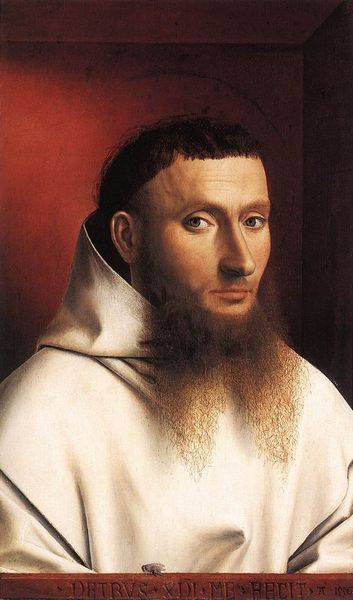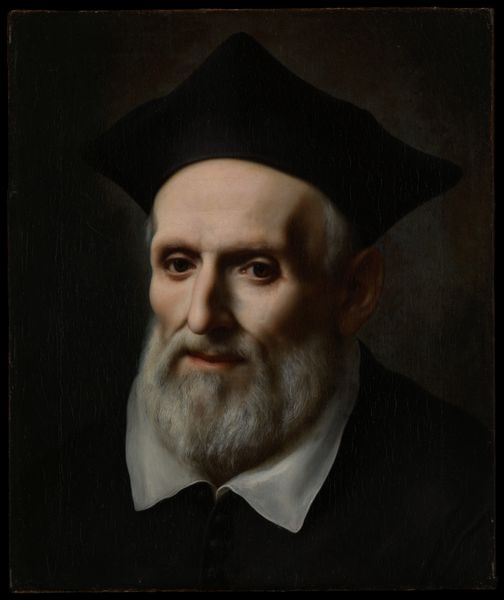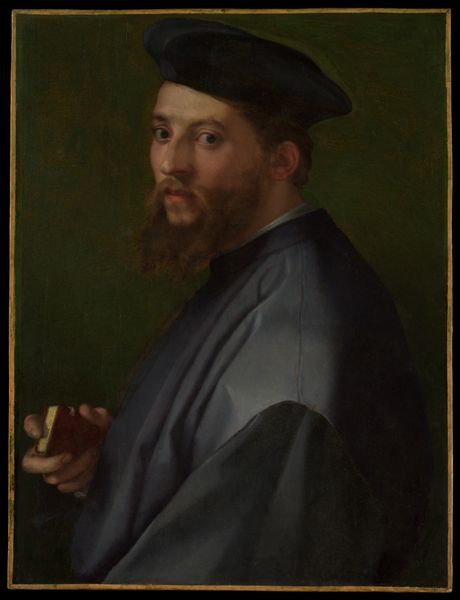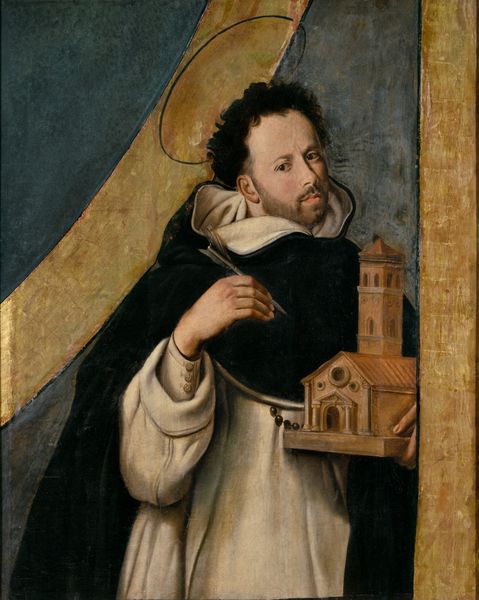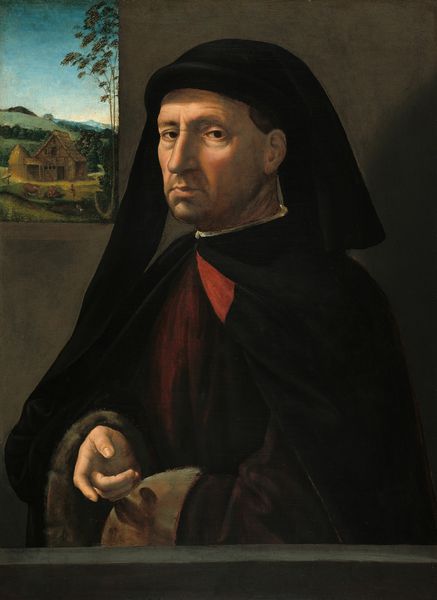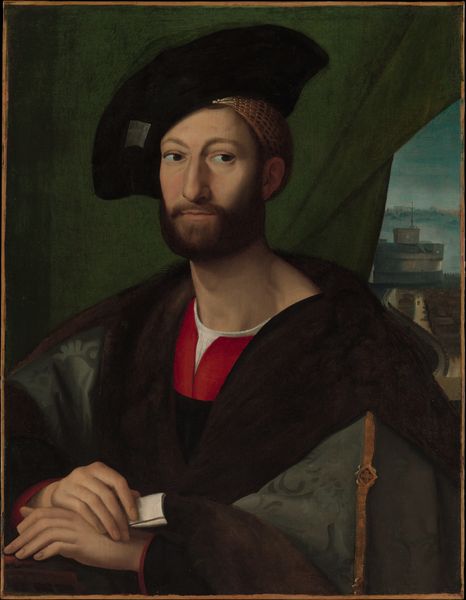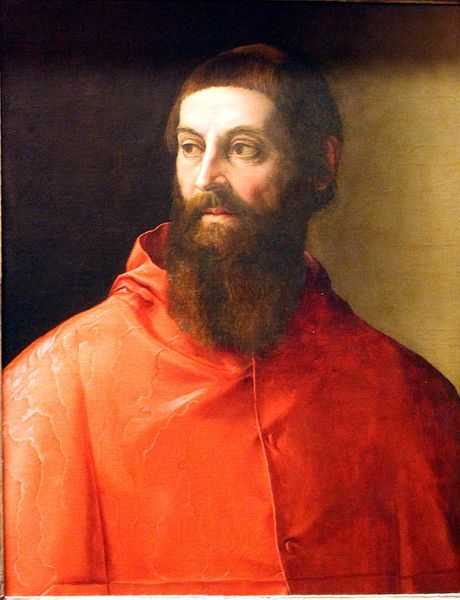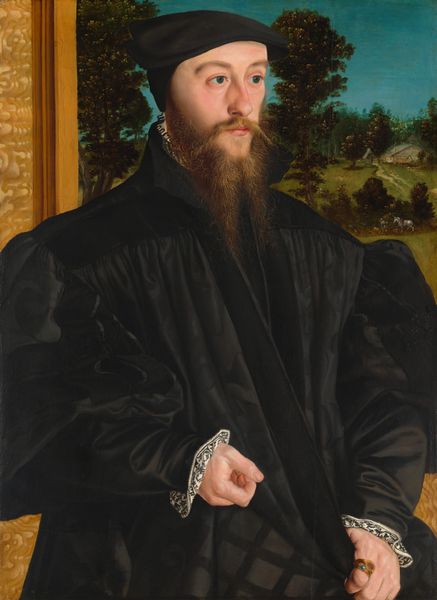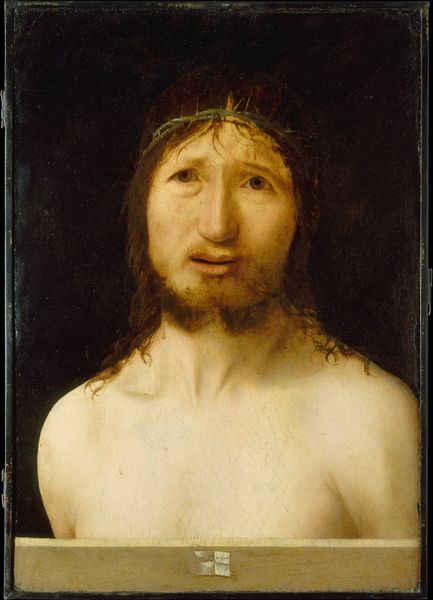
painting, oil-paint
#
portrait
#
painting
#
oil-paint
#
northern-renaissance
#
early-renaissance
#
portrait art
Dimensions: Overall 11 1/2 x 8 1/2 in. (29.2 x 21.6 cm); painted surface 11 1/2 x 7 3/8 in. (29.2 x 18.7 cm)
Copyright: Public Domain
Petrus Christus painted this portrait of a Carthusian monk in the mid-15th century, capturing the man’s solemn presence. The Carthusian order, known for its dedication to silence and solitude, is symbolized here by the monk’s white habit, a visual signifier of purity and spiritual commitment. The gaze, direct and unwavering, is a motif that reappears throughout art history. Think of ancient Roman portraiture, where a similar directness was meant to convey authority and character. Here, though, that gaze is internalized, reflecting monastic contemplation. Consider also the presence of the fly, a symbol that has traversed diverse contexts. In earlier vanitas paintings, the fly was a memento mori, a reminder of life's transience. Here, its presence is more ambiguous. Perhaps it is an acknowledgement of mortality, but also the tenacity of life, and the inevitability of decay. The psychological weight of this image lies in its austere simplicity, an invitation for contemplation on what remains permanent. Even now, centuries later, we feel the enduring power of this image and the symbols it contains.
